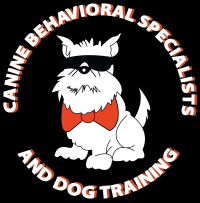A dog trainer for nearly twenty years, this is a question I get all the time. There are three BIG things to do to help reduce your dogs with separation anxiety.

If your dog suffers from separation anxiety,
it can be frustrating, but there are ways to help.
1. Structure:
Grounding – Dogs with separation anxiety need your help, and the first thing to do is to start having your dog do things such as responding to commands for everything he gets — food, attention, treats. Play and walks all happen after he listens and responds to a command such as sit. This will calm him and help reassure him that you are leading the team.
Space – Separation anxiety (SA) dogs are often “owner addicts.” They want to be leaning, touching, sitting on, gazing up at or sitting near their owners every moment. This needs to change. Get a dog bed. It doesn’t have to be fancy — a folded blanket will do — and give him all his petting and attention there. Treats are given there. Meals are given there. Make this the best seat in the house. Do not call him off of the bed to come to you, and leave him be when he is on it. This may be hard for you at first but things have to change, right?
Teach – Get the interaction you crave through training. Take a class, pick up a dog sport and find new ways to spend time with your dog — ways that don’t involve you attending to his needy side. If you want him more confident, you need to build his confidence through daily, fun training sessions. Developing shared communication between the two of you is a gift only you can give your dog.
Confinement – Many dogs can learn to be content in a crate that has become a pleasant spot. Crating an anxious dog can prevent mishaps and calm him.
As long as the dog doesn’t use the bathroom in the crate, it can be as large as you want.Start slowly. Introduce crating with treats — feed him in the crate and then crate for short periods when you are home. If you only crate when you leave, that can create more stress, especially for dogs with separation anxiety.
2. Exercise:
Physical – Long walks, solo fetch games, walking up slight hills and swimming are all good ways to give your anxious dog a work out. Some dogs enjoy other dogs but it can leave them more excited and active. When your dog is calmer after the session than before, you have found the right routine.
Mental – Mental exercise is just as important as physical, if not more. Games that build his self-control, focus, and patience are key to reducing his separation anxiety.
3. Calm:
Leave and greet your dog the way you leave and greet your parents or spouse — calm and matter of fact. Avoid long, drawn out, emotional partings because those only make matters worse for your dog. A good rule? Act the way you want your dog to act — he’ll follow your lead.
As frustrating as dogs with separation anxiety can be, yelling at your dog when you come home increases his stress, making the anxiety more intense. Prevention is key, not punishment.
Lastly, keep your routine the same seven days a week. If you give your dog 100% attention on Sunday, expect an increase in separation issues on Monday. Do him a favor and make his life predictable.
For more tips and tricks, follow Canine Behavior Specialists on Facebook. In the Colorado Springs area? Join our monthly pack walk! Or, contact me for group training or 1 on 1 lessons.
